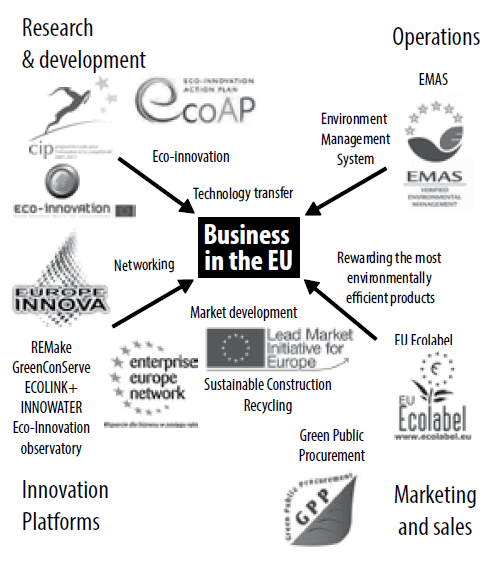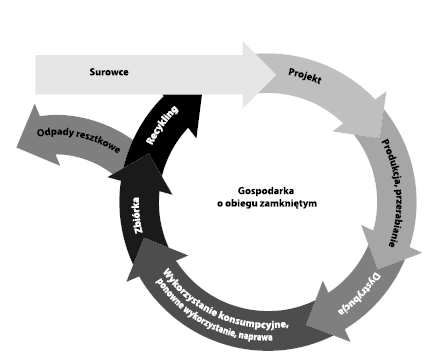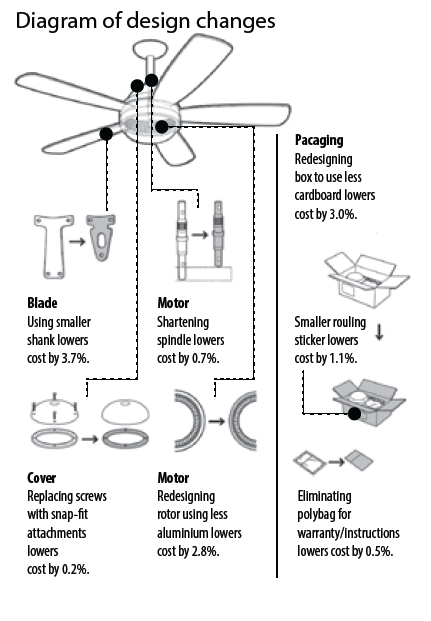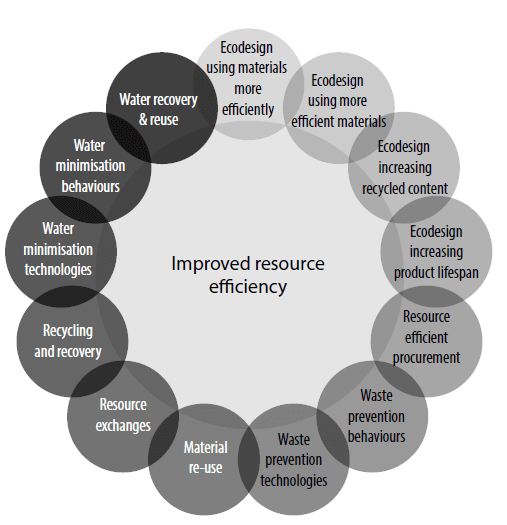MARKTING CYCLE 10/10
dr Katarzyna Michniewska, environmental economist, Military University of Technology, Faculty of Logistics
Keywords: sustainability, sustainable development, sustainable supply chain networks, sustainable product, closed-loop chains, supply chain management
Abstract: The progressive degradation of the environment provokes more and more frequent reflections – both in the world of politics, science and business – on the need to reduce the negative impact of human activity on the environment in which we live. It turns out that man is the only living creature that generates waste [1]. Due to the apparent negative effects on our environment there is a strong need to retreat from the traditional approach to production of goods and services in favour of a system of manufacturing which will have no negative effects. This brings up a discussion on the importance and the future of sustainable products.
SPIS TREŚCI
Introduction
Between the first mass production and its visible consequences for the environment on a macro scale many years passed. Industry therefore developed rapidly causing a lot of damage – often with virtually no environmental restrictions. Relishing economies of scale in production and rising prosperity of people has completely obscured the harmfulness of this type of activity. The first reflection came at the end of the twentieth century. During this period the principle of sustainable development [7] was developed. It shows the need for development that meets present needs without posing a risk to the possibilities of satisfying the needs of future generations. It is based on two basic concepts: the concept of ‘needs’, in particular essential requirements of the poorest in the world, which should be given the highest priority, and the concept of “restrictions”, imposed capacities of the environment to meet present and future needs through the state of the art and social organisation. The principle of sustainable development is also referred to as ecodevelopment and this aspect is closely related to the concept of ecosystem constraints. Ecological economics is also related to the principle of sustainable development. Ecological economics is the science of analysing and describing the economic, social and ecological processes underlying the implementation of sustainable development. Ecological economics refers to the ecological paradigm of economics and stands in opposition to the economics of the environment and natural resources based on the paradigm of the environment economisation. There are two schools of ecological economics: one linked to the International Society for Ecological Economics (ISEE), the other, closer to the neoclassical tradition, linked with the Stockholm Beijer Institute of Ecological Economics. The economic perspective is crucial here, as more and more is said about the externalisation of (offloading) costs when using natural resources on third parties: on taxpayers, on future generations or on nature [8]. As a result of measures taken to reduce negative effects the need for the development of recovery and recycling of products placed on the market has been emphasised for several years. A number of EU directives [2], which require Member States to achieve certain percentages in order to reduce landfilling serve this purpose. As the years pass the implementation of increasingly challenging targets in this area is strived after, having reflection in the economy concept of a closed circuit or “zero waste” policy.
Fig. 1 RECIRCULATION ECONOMY according to the European Union
Source: A proposal DIRECTIVE OF THE EUROPEAN PARLIAMENT AND OF THE
COUNCIL amending Directive 2008/98 / EC on waste, 94/62 / EC on packaging
and packaging waste, 1999/31 / EC on the landfill of waste, 2000/53 /
EC on end-of life vehicles 2006/66 / EC on batteries and accumulators and
waste batteries and accumulators and 2012/19 / EC on waste of electrical
and electronic equipment of 2nd July 2014.
The main objectives of the recirculation economy include:
- increasing recovery and recycling of municipal waste up to 70% in 2030,
- increasing recycling of packaging waste up to 80% in 2030, taking into account intermediate targets of 60% in 2020 and 70% in 2025,
- a ban on landfill of recyclable by 2025, with an attempt to completely eliminate landfill of waste by 2030.
However, it seems to be obvious that without increased efforts towards sustainable production, the achievement of these indicators is unlikely. Therefore, research that is the concern of environmental economists (economists who understand and contribute to the dissemination of the
principle of sustainable development) has become crucial for the possibility of inhibiting the negative effects of mass consumption at the current stage of development of production processes.
According to the International Society for Ecological Economics (ISEE), the central objects of environmental economists research are the following issues:
- Modelling: How to combine better economic and environmental models in order to adequately investigate and manage local biodiversity, ocean ecosystems, climate services of the Earth’s atmosphere, etc.?
- Justice: What is the relationship between interpersonal justice, intergenerational justice or justice at the level of nations and sustainable development?
- Indicators: Is it possible to control the process of socioeconomic development by supplementing the existing indicators (GDP) with biophysical indicators, such as the ecological footprint, and social ones, such as education of women?
- Critical: What characteristics of ecological and social systems act as development boundaries and to what extent can the objectified capital replace the natural capital?
- Trade and development: How does the current development policy targeted at facilitating the flow of capital affect the possibilities for control of natural resources, the ability of nations to manage natural systems and the distribution of welfare?
- Valuation: To what extent can ecosystem services outside the markets be valued, and how can the social discourse on environmental and social values to enrich the purely economic measures be supported?
- Political instruments: How can systems of trading ecological certificates be effectively combined with the ecological tax reform and put into effect?
Certainly the effects of research in these areas will contribute to designing of sustainable products and services, although this is neither an easy, nor a short process. While focusing on solid waste (which is a significant side effect of the consumption process), shrinking places in which to deposit it and the need to find uses for it, so that waste is environmentally neutral, a discussion on the phenomenon of product sustainability is unavoidable.
Types of sustainable products
A sustainable product is a product which throughout its life cycle (from the input products to reuse or recycling) corresponds to the rules of sustainable development management [8].
Analysing the issue of sustainable products it can be concluded that there are three types of these products:
- A group of environmentally neutral products manufactured according to the concept of “cradle2cradle”, so those that do not generate waste [1].
- A group of products known as sustainable due to the ecological life cycle analysis of the product when designed [3], which reduces their environmental impact to a minimum.
- A group of products known as sustainable, because they have so-called eco-passport (or other form of informing customers) – i.e. full information about how they can be repaired, reused or recycled, when the previously mentioned options have been exercised. The first group of products has as many supporters as opponents. Its positive aspects for the environment are spectacular, but at the same time high costs of creating these types of products and the lack of economic justification are mentioned.
Fig. 2 An example of a sustainable product belonging to the second group
Source: European Commission Final Report The opportunities to business of
improving resource efficiency Contract Ref. 070307/2011/610181/ETU/F.1 AMEC.
The second group of products, referred to as sustainable design [8], has a very long history, as the first requests in this regard already appeared in the early twentieth century. The very discussion on eco-design began in the 70s.
The third group appears to be just adding to traditional products information on dealing with them according to the principle of sustainable development.
Considering the above characteristics of the three groups, the greatest hopes are connected with the second group. This does not change the fact that sustainable designing faces many challenges, including the following problems:
- in a compound product many different materials are used, especially plastics (recovery of cost effective and clean quality of the raw material becomes then unlikely),
- improved connections between different elements of the product, formed by welding and bonding, make it difficult to disassembly,
- composite materials, coatings and additives form an indivisible whole,
- even those products that once had a simple composition, now have become more and more complex due to impurities (e.g. paper and aluminium) [8].
In order to determine whether a product is sustainable, it should be subjected to multicriterial evaluation. Summary of these evaluation criteria is listed in the table.
Table 1. Targeting criteria for the evaluation of products and production towards meeting the requirements of sustainable management
Source: Rogall H., Ekonomia zrównoważonego rozwoju. Teoria i praktyka
[Economics of sustainable development. Theory and practice], Wydawnictwo
Zysk i S-ka, Poznań 2010.
The LCA method belongs to other methods of examining the compliance with the principle of sustainable development, which allows, inter alia, to investigate the suitability for recovery of both products and associated packaging [12]. To many programmes encouraging sustainable production those presented in Figure 3 can be included.
 Fig. 3 Programmes promoting sustainable products and services
Fig. 3 Programmes promoting sustainable products and services
Sou rce: European Commission Final Report The opportunities to business of
improving resource efficiency Contract Ref. 070307/2011/610181/ETU/F.1 AMEC.
The variety and large number of these programmes increase the chances for the success of sustainable products and services on the existing markets and their dynamic development and popularisation.
Sustainable products and their impact on the organization of enterprises
Raw material efficiency is emphasised in this era of fascination with the recirculation economy. One of the many ways to achieve this efficiency is also eco-design. The extensive spectrum of sources available to modify business environment to achieve resource efficiency is shown in Fig. 4
Fig. 4 Sources of resource efficiency in the enterprise
Source: European Commission Final Report The opportunities to business of
improving resource efficiency Contract Ref. 070307/2011/610181/ETU/F.1 AMEC.
Striving for sustainable products or services is not without significance for logistics processes involving the provision of these goods to the purchaser. In connection with new trends in this area, more and more is said about business logistics responsibility (Logistics Social Responsibility), which comes down to such organisation of distribution processes so that they can support the assumptions of sustainable design and manufacturing. This causes more and more talk about sustainable supply chain management. Sustainable production is also reflected in the organisation of the whole company and business models by which it achieves a competitive advantage. Five steps to rebuild the company in accordance with the principle of sustainable development are:
1) viewing compliances as opportunity;
2) making the value chain sustainable;
3) designing sustainable products and services;
4) developing new business models;
5) creating next practice platforms [5].
Thus clear trends can be seen for changes in the economy aimed at the transformation towards sustainable development and therefore enabling the use of this change to achieve a stronger market position. It is in fact likely that companies which first provide consumers with sustainable products will become more competitive in their sectors. These findings seem to be supported by changes in the approach to supply chain management. Three ways to the development of sustainable logistics chains are distinguished:
1) by emphasising products and services previously in portfolio, which have the attributes of organic farming;
2) by acquisition of companies / brands considered ‘green’, e.g. the purchase of The Body Shop by L’Orèal [10];
The recorded activities of entrepreneurs suggest, therefore, that different methods will be aimed towards the provision of sustainable products. Consumers’ opinion is significant in this respect.
The social aspect of sustainable production
Society representing the purchasing power is certainly aware of negative effects of excessive consumption. Especially that in some places excessively overloaded with production these changes are already noticeable “with the naked eye” (e.g. smog in Chinese cities, around which most of the world production is concentrated, and the accompanying pulmonary disease). Therefore, analysing whether and when we will be beneficiaries of the products created in compliance with environmental protection principles, the criteria to assess the phenomenon in terms of social aspects cannot be ignored. Key factors for the consumer are:
- waste collection and recovery technology system availability,
- consumers’ knowledge and the level of environmental awareness,
- meeting consumers’ expectations in terms of sustainability,
- costs associated with the end-of life cycle of the product and its packaging [6].
The depletion of resources along with the development of the city mining [4] concept, which is based on the extraction of the largest mass of raw materials from urban areas, are on the one hand quite burdensome for consumers; on the other hand, they turn attention to the need for increased awareness in making purchase decisions. An omission in analysing environmental product performance and services at this stage of sustainable development will certainly result in the need for greater public involvement in subsequent periods when the lack of sustainable production becomes clearly onerous, which scientists warn against [11].
Summary
On the basis of the aspects presented in the article on the participation of sustainable products on the market it should be noted that the interest in this type of products is clearly visible on both the entrepreneurs’ and consumers’ side. Surely sources of motivation are different, but their intensity indicates a high probability of the increased substitution of traditional products for counterparts manufactured with respect for the principles of sustainable development. A phenomenon indicating the positive development of this trend is the numerous tools and analytical methods in the field of meeting the criteria for recognition of product conformity with the principle of sustainable development. Finally, the growing environmental awareness of recipients increases the pressure to reduce environmental degradation, which has a positive effect on the chances of sustainable products on the market. Sustainable products are a fact, not a utopia [9]. An unanswered question remains, however: whether the exchange of traditional products for sustainable products will take place in the near future or maybe it will be a long and complicated process, whose total completion on a global scale will take significant deposits of resources, energy and time.
References
- Braungart M., McDonough W., Cradle to cradle. Remaking the way we make things, North Point Press, New York 2002.
- Directives: 2008/98 / EC on waste, 94/62 / EC on packaging and packaging waste, 1999/31 / EC on the landfill of waste, 2000/53 / EC on end-of life vehicles, 2006/66 /EC on batteries and accumulators and waste batteries and accumulators, 2012/19/ EC on waste of electrical and electronic equipment.
- Foltynowicz Z., Lewandowska A., New direction of development in environmental life cycle assessment, “Polish journal of environmental studies”, 2004.
- Grodkiewicz P., Czynniki wpływające na możliwość efektywnego wdrożenia idei city mining w stosunku do polskich składowisk odpadów komunalnych [Factors influencing the ability to implement effectively the idea of city mining in relation to the Polish landfills], „Logistyka Odzysku” 2014, 4 (13).
- Nidumolu R., C.K. Prahalad, M.R. Rangaswani, Why Sustainability is now the key driver to innovation, Greening your business profitably, Harvard Business Review, Boston 2011.
- Nowakowski K., Ganczewski G., Grochocka M., Wójcik K., Zrównoważony rozwój opakowań. Kierunki rozwoju opakowań. Wybrane problemy.[Sustainable development of packaging.Directions in packaging development. Selected issues.], Polska Izba Opakowań, Warszawa 2014.
- Our Common Future, (Brundtland Report), United Nations World Commission on Environment and Development, 1987, www.un-documents.net/our-common-future.pdf
- Rogall H., Ekonomia zrównoważonego rozwoju. Teoria i praktyka [Economics of sustainable development. Theory and practice], Wydawnictwo Zysk i S-ka, Poznań 2010.
- Souza C.G., Sustainable Operations and Closed-Loop Supply Chains, Business Expert Press, New York 2012.
- Unruh G., Ettenson R., Growing green. Three smart paths to developing sustainable products, Greening your business profitably, Harvard Business Review, Boston 2011.
- Weizsaecker U.E. von, Lovins A.B., Lovins L.H., Mnożnik cztery. Podwojony dobrobyt – dwukrotnie mniejsze zużycie zasobów naturalnych [Multiplier of four. Doubled prosperity – twice less consumption of natural resources], Wydawnictwo Rolewski, Toruń 1999.
- Żakowska H., Metoda LCA w logistyce odzysku odpadów opakowaniowych cz.2. [The LCA method in waste packaging reverse logistics, part 2], “Logistyka Odzysku” 2014, 3(12).
Journal of Reverse Logistics 1/2015 (1) p. 5-9




